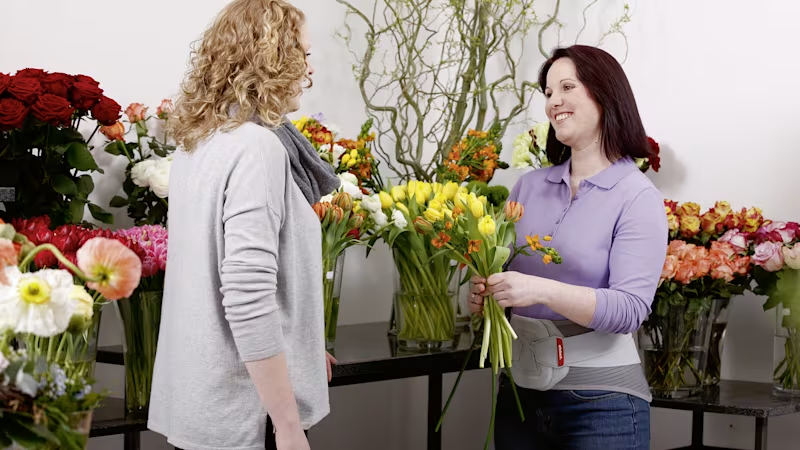


Cervical spine and back orthoses
Ottobock orthoses have a stabilising and activating effect that supports your back and cervical spine. Quality and comfort for pain-free mobility.
Ottobock orthoses have a stabilising and activating effect that supports your back and cervical spine. Quality and comfort for pain-free mobility.
Cervical spine and back orthosis: stability and pain relief for your spine and back
The human spine stabilises the entire body. The spinal column consists of 24 vertebrae and 23 intervertebral discs. It’s responsible for keeping you upright and allowing your upper body to move. However, various factors – such as a disease (e.g., osteoporosis), an accident, a sedentary lifestyle or lack of exercise – can weaken your cervical spine and back.
The resulting pain can be intense. Back orthoses and orthoses for your cervical spine can help in such cases. They support and stabilise the affected area. Back orthoses and cervical spine orthoses use stretchy supports and rigid metal or plastic bars to give you the support you need, right where you need it to help relieve pain.
When might I need a back orthosis?
Back and cervical spine orthoses are available only on prescription. In most cases, they will be necessary after an accident or surgery or because of acute pain or a disease. Elderly people with osteoporosis are often affected by pain and instability in the spine. Other people may need to wear an orthosis during pregnancy, or during treatment for a herniated disc or lumbago. In such cases, your doctor may prescribe a back orthosis alongside other forms of treatment such as physiotherapy, massage or heat therapy. The orthoses can straighten, correct and stabilise specific parts of your back. In doing so, they prevent malpositions and relieve strain.
As well as prescribing the orthosis, your doctor will tell you how often and how long you need to wear it. Wearing an orthosis is something patients have to get accustomed to, so at first you should only wear it for a short amount of time. You can then gradually wear it for longer. Some back orthoses are designed to eventually be worn for several hours or even all day, while others are required only for stability during specific activities.

Everyday life with a back orthosis
Putting on a cervical spine orthosis – or any device for your back or hand – requires a certain amount of practice. Your doctor or O&P professional will explain the procedure and show you exactly how to put on your back support or orthosis by yourself. Ottobock orthoses are easy to put on, often using only one hand. We’ve designed them to be as straightforward as possible in everyday use, because therapy will only be successful if you wear the back orthosis as recommended. The orthoses are also designed with comfort in mind, because this encourages people to wear them regularly. Flexible materials, drawstrings and customised support elements ensure a perfect fit, and most orthoses are slim enough to be worn comfortably and inconspicuously under your clothing.
We integrate breathable materials even in larger supports to prevent you from sweating under the orthosis when the temperature rises. And, of course, all Ottobock back orthoses can be washed – and some are even machine washable. Always follow the instructions on the care label to maximise the lifetime of your orthosis.
Ottobock has been making products that improve quality of life since 1919. Our orthoses, prostheses, wheelchairs and other devices help people overcome physical disabilities – whether on a temporary or permanent basis – and enjoy a mobile lifestyle once again. All Ottobock back supports are also designed with comfort in mind. Breathable materials are a key part of this, along with other factors. All orthoses – whether for the lumbar, thoracic or cervical spine – can be adjusted to the individual wearer so they fit as comfortably yet snugly as possible. An O&P professional will adjust any supporting elements such as bars, rods and shells to your body shape.